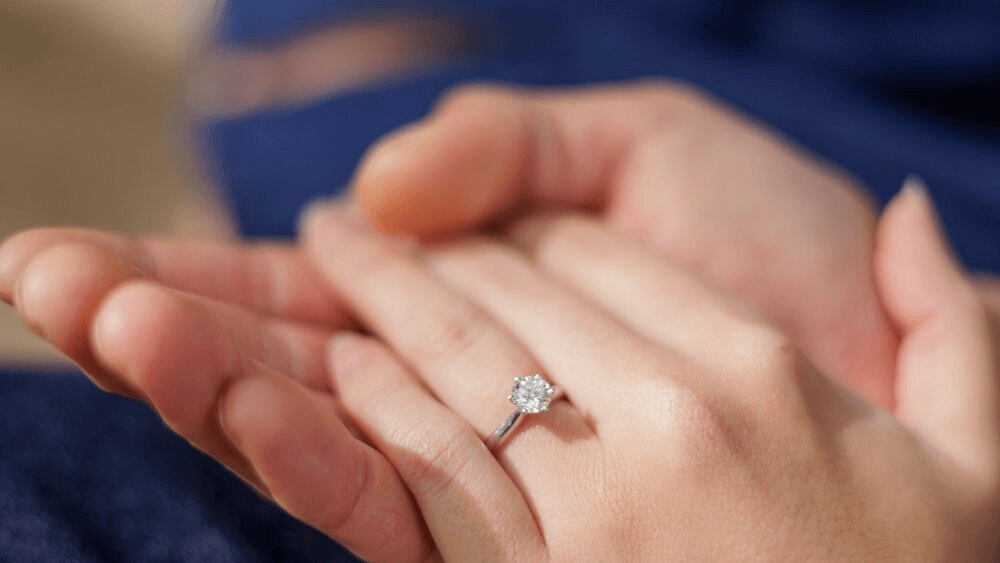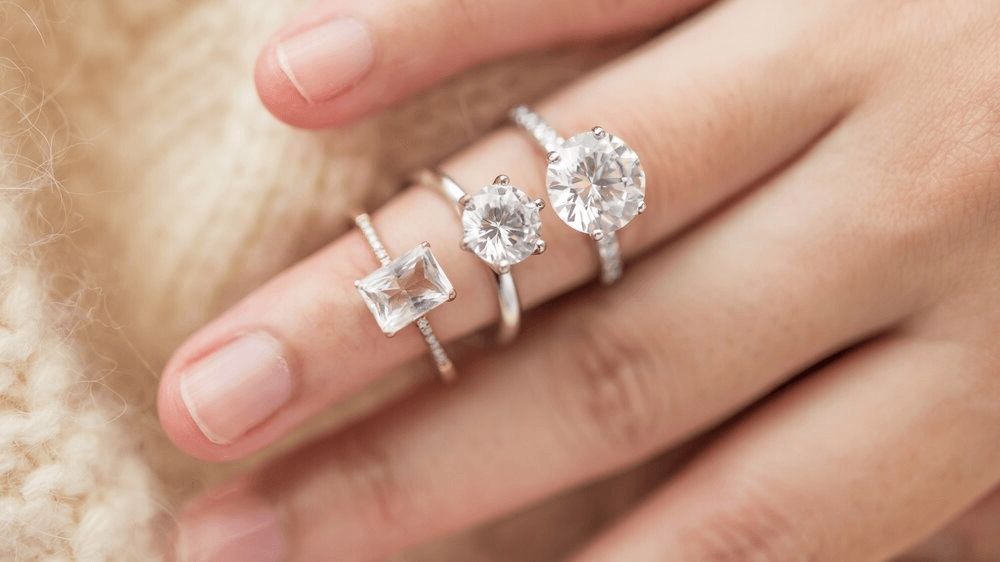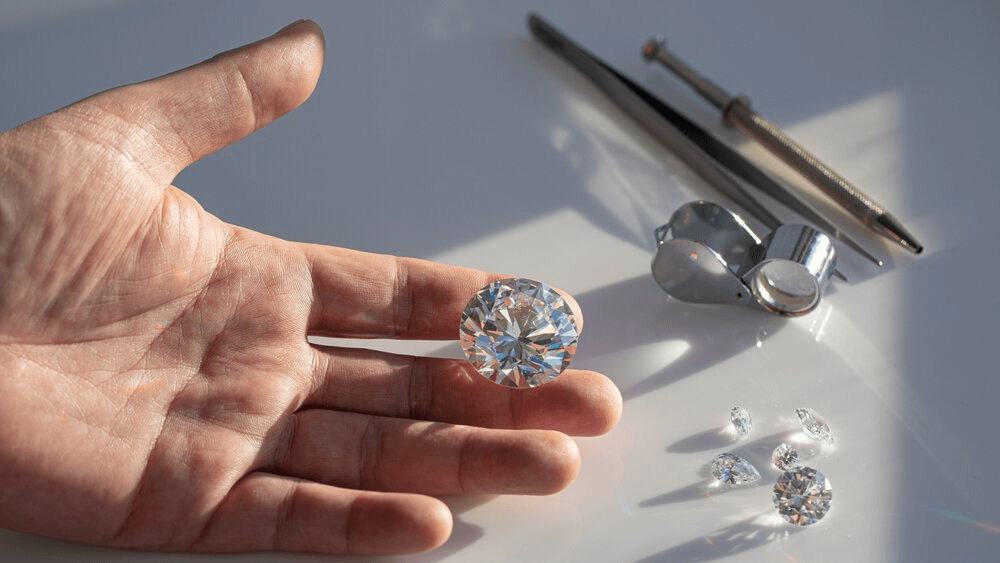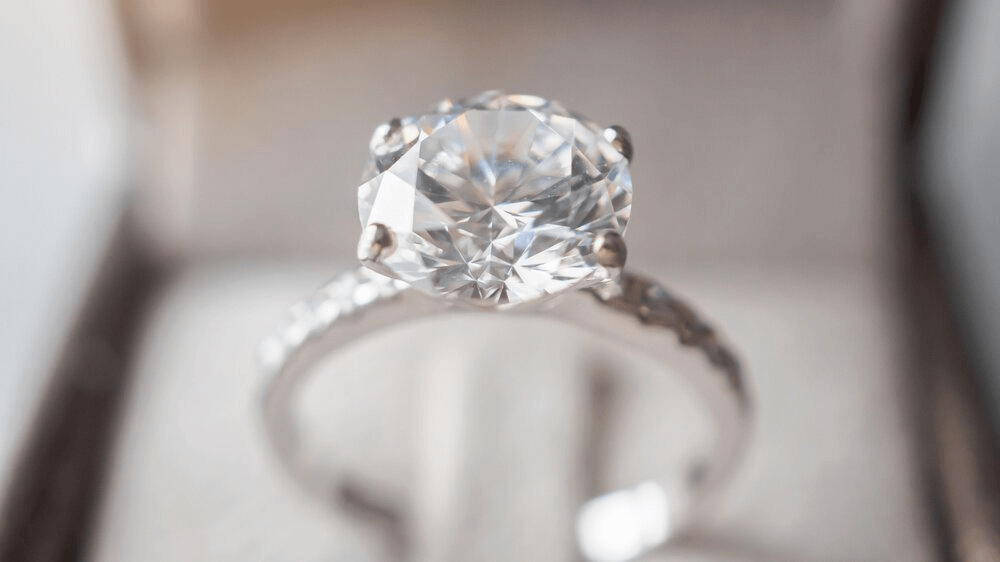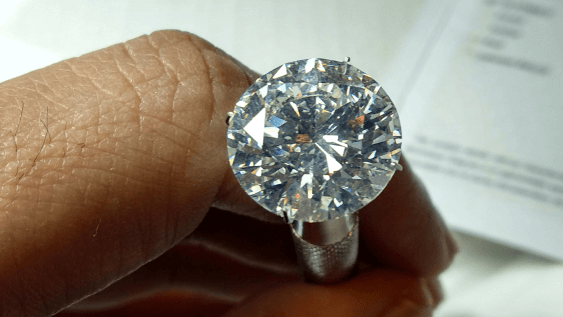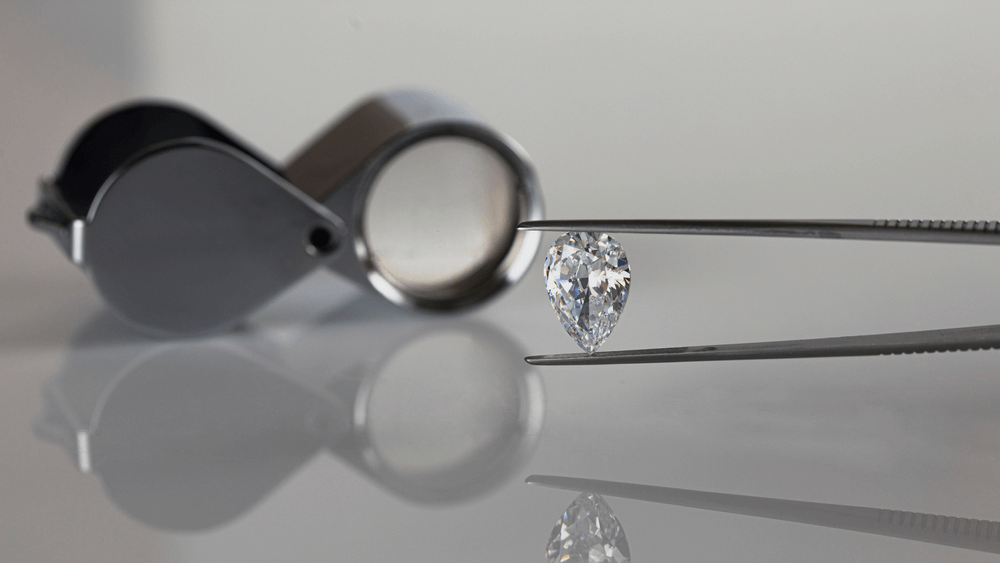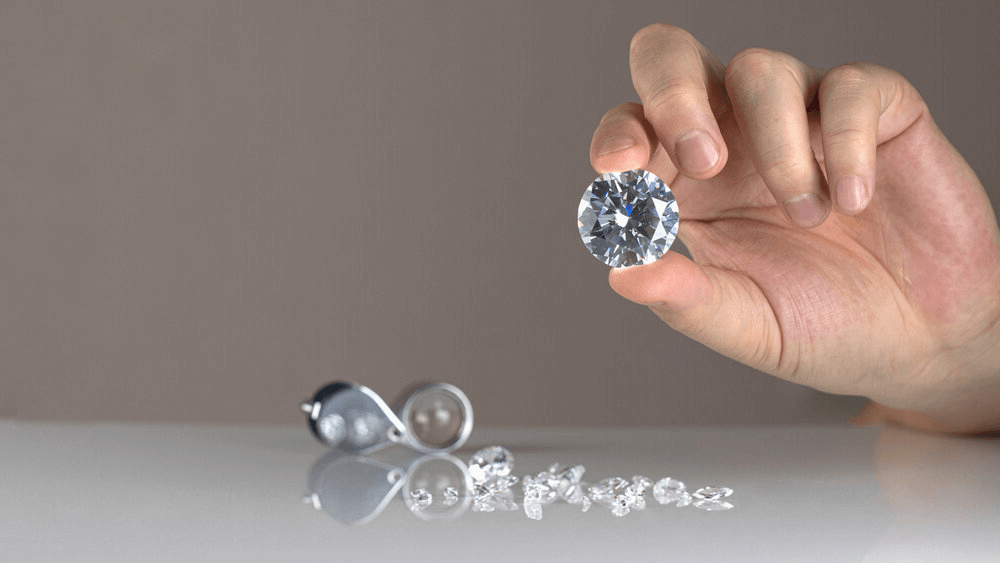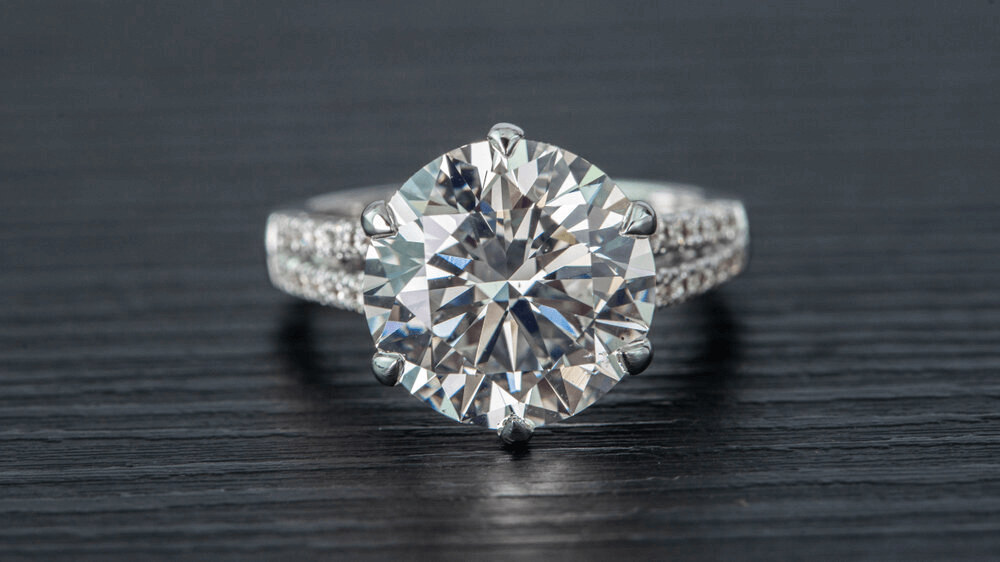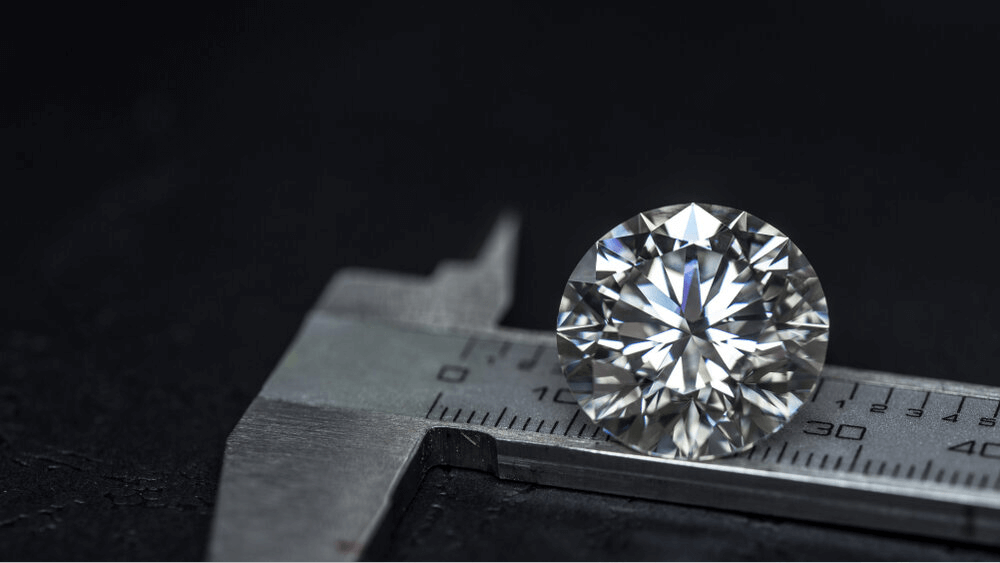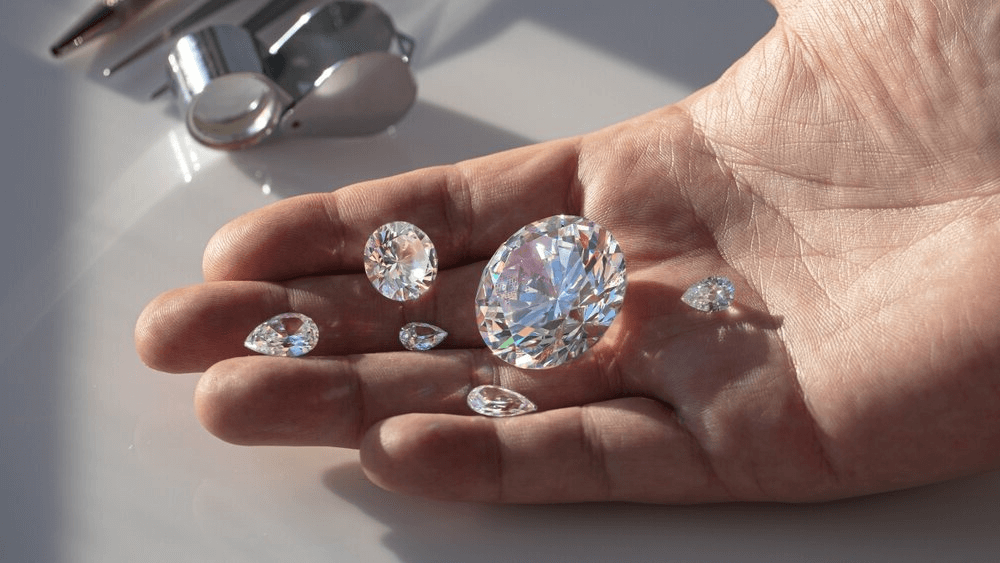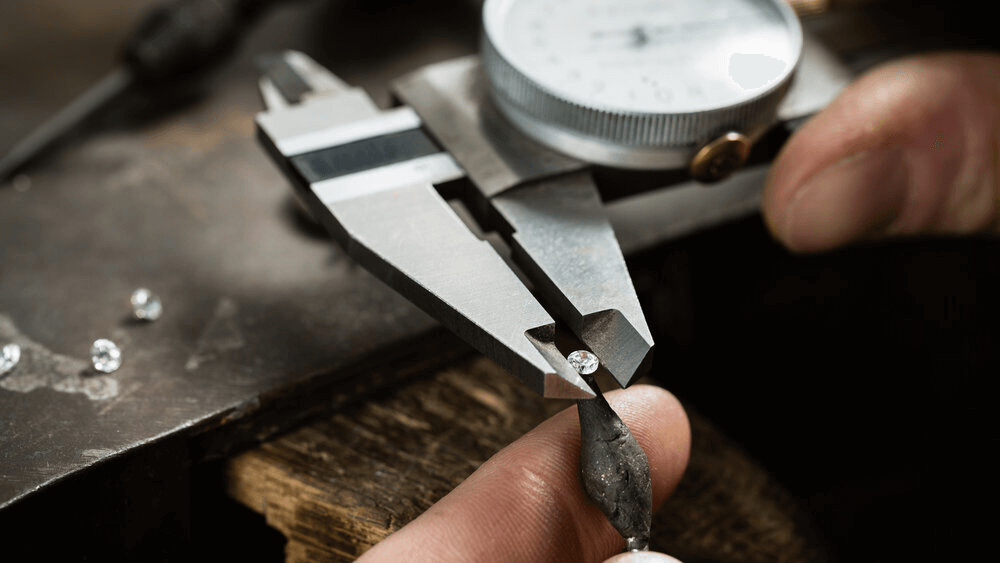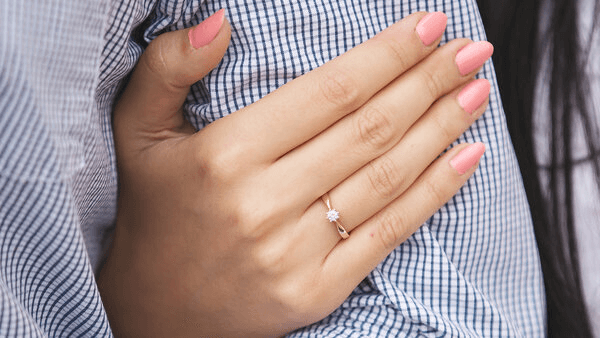Shocking Truth: 2 Carat Diamond Prices Revealed

By Gary A.

Edited by Olivia H.
Published Oct 29, 2021
Edited on Mar 31, 2025
For those looking to make a statement, a 2 carat diamond offers that stunning balance of size and sparkle, creating a breathtaking centerpiece for any engagement ring.

- 7 Quick Tips for Buying a 2-Carat Diamond Engagement Ring
- Introduction to 2 Carat Diamonds
- Deciphering 2 Carat Diamond Price Points
- 2 Carat Diamond Price Influencers: Clarity, Color, and Cut
- Navigating the Market: What to Expect in Terms of 2 Carat Diamond Cost
- Natural vs. Lab-Grown 2 Carat Diamonds
- Choosing the Right Setting for Your 2 Carat Diamond
- Our Expert Take
- 7 FAQs
Before we dive deeper into the specifics, here are some practical tips to help guide your decision-making process:
7 Quick Tips for Buying a 2-Carat Diamond Engagement Ring
Purchasing a 2-carat diamond engagement ring is a significant decision that requires careful consideration, especially when it comes to evaluating price and quality. Here are essential tips specifically tailored for 2-carat diamonds:
- Tip 1: Understand Price Brackets for 2-Carat Diamonds: 2-carat diamonds have a broad price range, often between $8,500 and $55,000. This variance is due to factors like cut, color, clarity, and the specific diamond’s unique characteristics. Familiarize yourself with the average price for the quality you desire to ensure you’re getting a fair deal.
- Tip 2: Optimize Cut for Maximum Brilliance: In 2-carat diamonds, the cut is crucial as it significantly influences the stone’s brilliance and appearance. A well-cut 2-carat diamond can mask slight color imperfections and make the stone appear more vibrant. Prioritize an excellent or very good cut to enhance the diamond’s sparkle.
- Tip 3: Balance Color and Clarity for Best Value: For 2-carat diamonds, balancing color and clarity can optimize value without compromising beauty. A color grade of G to H and a clarity grade of VS1 to VS2 typically offers a visually stunning diamond without unnecessary expense. Remember, slight differences in these grades can substantially impact the price.
- Tip 4: Consider Near-Carat Weights for Better Pricing: Diamonds just below the 2-carat mark, such as a 1.9 or 1.95-carat diamond, can offer a lower price while maintaining a similar visual impact. This strategy can result in significant savings with a negligible difference in size.
- Tip 5: Research Different Shapes and Their Impact on Price: Different shapes can affect a diamond’s price. Round diamonds are the most popular and often the most expensive. Exploring other shapes like oval, cushion, or princess can provide more value for money and offer a unique look.
- Tip 6: Compare the Impact of Settings on Apparent Size: The setting of a diamond can influence how large it appears. Certain designs, like a halo setting, can make the diamond seem larger. This means you might opt for a slightly smaller diamond without compromising on the ring’s overall appearance.
- Tip 7: Examine Diamonds Under Various Lighting: View the diamond in different lighting environments to get an accurate sense of its true color and clarity. Store lighting can sometimes be misleading, so seeing the diamond in natural light can provide a better representation of its appearance.
Now that you’ve got these practical tips, use Jeweler AI below to find the perfect engagement ring that suits your style and budget:
Introduction to 2 Carat Diamonds
Unless you and your partner are approaching this as a team, you probably kicked off the process of finding an engagement ring with an attempt to work out exactly what your partner’s expectations are likely to be.
If this is the case, then it seems a fair guess that one of the first things you found out was the average carat weight for diamond engagement rings, which falls right around the 1 carat mark (give or take).
This is, of course, great to know – it’s grounding, and useful when you’re looking to gauge exactly what 0.5 carats, 1 carat or 2, 3, 4, or 5 carats really means.
But, it’s only natural for the mind to wander – for the excitement to kick in and, of course, the desire to go a little above the norm.
That’s why the jump from thinking about 1 carat diamonds to thinking about 2 carat diamonds is a pretty natural progression. Why not double-up, aim a little higher, and surpass expectations with a much weightier stone?
Here’s what you need to know.
The Basics of 2 Carat Diamonds
If you’re looking at a Round Brilliant, then 2 carats tends to give a diameter of 8.1mm.
For those unaware, the 2 carat diamond is around 1.6mm greater than a 1 carat diamond – enough to make a considerable difference on the finger, and to appear noticeably more substantial. It also makes it that bit easier for the wearer to appreciate the finer details of the stone.
Since 1 carat is equal to 200 milligrams, 2 carats is the equivalent of 0.4 grams.
Some people are surprised to learn that a 2 carat diamond is not simply twice the size of a 1 carat diamond – after all, it is twice the weight. This is simply down to weight distribution, and the fact that not all of a diamond’s weight will be distributed across its face-up appearance.
The pavilion, or the lower half of the diamond that resembles an inverted pyramid or cone, also contains a lot of the diamond’s weight. While the amount varies from cut to cut, it is essential to creating the sparkle diamonds are famous for, as it creates the right amount of space (and angles) for light to be refracted through the stone.
As such, the table surface measurements for other shapes will differ from the Round Brilliant. For instance, the Princess (a square shape) of 2 carats tends to measure just under 6.5mm x 6.5 mm, while the Radiant will appear a little larger at 7.28mm across.
The Allure of 2 Carat Diamonds
At twice the national average, opting for 2 carats instead of 1 is a sure-fire way to turn heads and really celebrate the detail found in any well-cut diamond.
Obviously, in that case, a well-cut diamond is key. You wouldn’t have to look too hard to find relatively cheap 2 carat diamonds that feature a poor, asymmetrical or badly proportioned cut. Similarly, 2 carat diamonds with noticeable flaws or color will typically fall at that low end of the price range for diamonds of this weight.
In other words, don’t assume you’ll find a worthwhile 2 carat diamond at a rock bottom price. These diamonds are highly popular due to the fact that they sit well above the average size for engagement rings, which means that any quality stone (that is, one that is truly worth your money) will be priced accordingly.
Deciphering 2 Carat Diamond Price Points
While the average sits between $12,00 and $18,000, 2 carat diamonds will almost always fall between $8,500 and $55,000, with both prices representing extremes in terms of quality.
The amount of discrepancy between these two price points is down to the fact that there really is no simple answer to the question, How Much is a Diamond Worth?
In a nutshell, it comes down to weight and quality, although quality is divided into a number of subcategories, all of which have their own bearing on the eventual price tag given to any diamond.
For instance, one of the Four Cs of diamonds – clarity – refers to the presence or absence of inclusions (common and naturally-occurring flaws within the internal structure of the diamond – and is considered independent of size, color or cut quality.
Flawless diamonds (both FL and IF) are awarded the highest prices, and can elevate the price of a diamond by tens of thousands of dollars even if you can’t tell the difference between that diamond, and another with a substantially lower price.
This is something we will go into in much, much more detail below, but it offers a little more insight into why 2 carat diamonds can be priced so far apart.
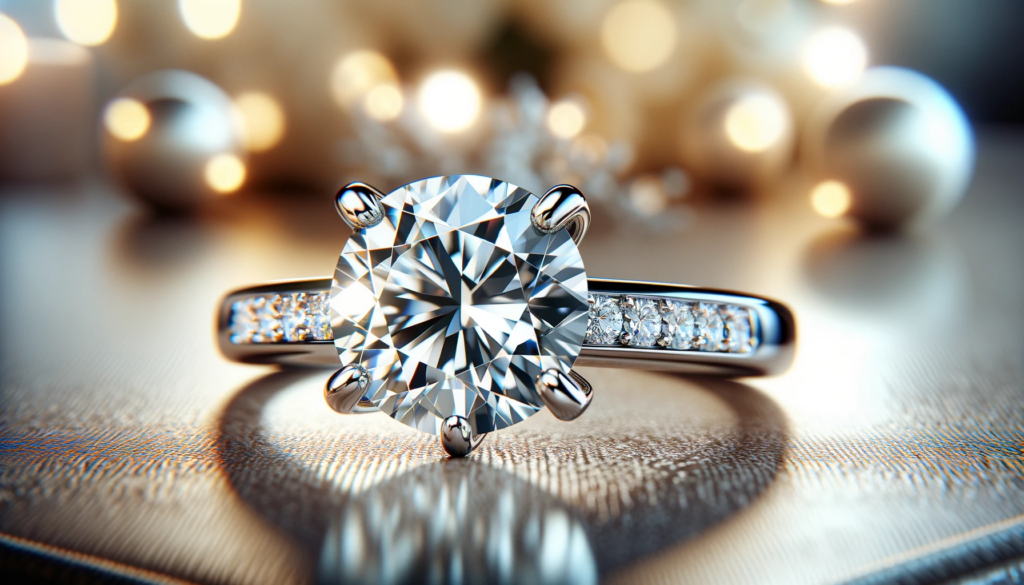
2 Carat Diamond Price Influencers: Clarity, Color, and Cut
It’s not just about the price of 2 carat diamonds – it’s about what prices are worth paying. At both ends of the pricing spectrum, there will be plenty of diamonds that simply aren’t worth your money, and they key to making a good purchase is being able to recognize that, and being able to know when it’s time to move on.
Cut
We don’t recommend any of our readers use Cut, the first of the Four Cs, to lower the price of their diamond. Unlike some other features, there’s very little scope for lowering the cut grade without also limiting yourself to diamonds that are significantly lower in quality.
The solution? Don’t get caught up on the very low end of 2 carat diamond prices. Yes, it’s possible to find diamonds priced way below their counterparts on the market – and they may look okay in a single photo – but there is a reason why most sellers, jewelers and industry experts – us included – won’t go below a ‘Very Good’ cut grade.
The GIA grades the cut of Round Brilliant diamonds with the following scale:
| Excellent | Very Good | Good | Fair | Poor |
As you can see, if you follow our advice, there’s very little scope for saving money on a diamond’s cut quality – and this is just something anyone looking to make a good investment has to get used to.
For all diamonds (including the Round Brilliant shape), the same scale is used for Symmetry and Polish, rather than an overall cut grade – and the exact same rules for quality apply.
You also want to pay close attention to the diamond’s proportions, as this will have a major impact on the beauty of the stone, and its ability to produce a strong light performance with plenty of fire and brilliance.
Color
Unlike cut, color is one aspect that can afford you more flexibility when it comes to finding a diamond in your price range. However, while the lower color grades are very useful for smaller diamonds, it’s important to remember that, as you move up through the carat weights, larger stones tend to betray their own color a little more readily.
What does this mean? That, while a J color grade might work find for a diamond that sits around 0.9 – 1 carat in weight, it might be a step too far in the wrong direction for a diamond that is substantially larger.
The GIA grades color using the following grades:
| Colorless | Near Colorless | Faint | Very Light | Light |
| D, E, F | G, H, I, J | K, L, M | N, O, P, Q, R | S, T, U, V, W, X, Y, Z |
Nobody wants a yellow diamond – and particularly not when the diamond is big and attention-grabbing enough to ensure that even a vague tint of color will be noticed.
There are, of course, ways of ‘off-setting’ a slight amount of color in a diamond. Opting for a yellow or rose gold setting will create a good amount of contrast between the stone and the ring, and make the stone appear whiter (clearer). Alternatively, a halo of diamonds featuring a slightly lower color grade can achieve the same affect.
This can, however, be a little too restricting. If your partner wears silver , white gold and platinum jewelry, for instance, then it’s unlikely you’ll want to feel compelled to pick gold for the sake of a slightly lower color grade.
How Much Does Color Impact Price?
It various depending on the grades you’re looking at (and, of course, the carat and clarity of the diamond) but, in general, you can expect a difference of around 10% – 15% between each color grade.
The difference will be considerably more significant when you go from one color category to another. For instance, K grade diamonds are substantially lower in value than J color diamonds, since the latter belongs to the ‘Near Colorless’ group, which is considered to offer a broad range of diamonds that appear to be totally clear, but cost nowhere near as much as the D color, E color, and F color diamonds.
Accordingly, you’ll encounter a jump in price between G and F color diamonds – although not as much as you might think, since the proximity G color diamonds hold to the colorless grades earns its own premium on the market.
Clarity
Again, clarity is a great area to save yourself some money without having to lower your standards – at least, provided you don’t start staring at your diamond under the microscope.
Many inclusions commonly found within diamonds are only noticeable under a microscope. Sure, 2 carat diamonds will be a little more likely to show their flaws than a diamond less than half their weight – and particularly if you’re after a diamond with a larger table, like the Emerald shape – but there’s still room for manoeuvre.
While, at 1 carat, you could find options as low as the SI2 grades, we’d recommend focusing your search for an eye clean 2 carat diamond at Vs2 or, potentially, SI1 – although the VS grades will likely offer the best value for money.
As you can see from the GIA clarity scale below, this gives you plenty of opportunity to avoid the very highest prices for 2 carat diamonds:
| Flawless | Internally Flawless | Very, Very Slight Inclusions | Very Slight Inclusions | Slight Inclusions | Inclusions |
| FL | IF | VVS1 & VVS2 | VS1 & VS2 | SI1 & SI2 | I1 & I2 |
Heavily included diamonds will be priced much lower – and, for that reason, tempting investments. Nevertheless, eye clean diamonds remain the only advisable choice for engagement rings, or any fine jewelry.
Heavy inclusions can, in worst case scenarios, weaken the diamond and make it more vulnerable to breaking. They can also interrupt light performance, inhibiting your otherwise-beautiful diamond’s ability to sparkle as it should.
How Much Does Clarity Impact Price?
As with Color, the difference between two Clarity grades depends on where they sit along the GIA’s scale. The difference between a VVS2 and VS1 diamond is, however, significant: between $5,000 and $6,000 for many 2 carat diamonds.
And, given how it’s possible for you to find a diamond that looks just as beautiful as those to diamonds at an even lower grade, the potential for lowering the price by thousands of dollars is very high.
In a pair of 2 carat Round Brilliant diamonds, both featuring H color and an Excellent cut, you could find a price difference of between $7,000 and $8,000 just from looking at the VS2 rather than the VVS1 graded diamond.
Navigating the Market: What to Expect in Terms of 2 Carat Diamond Cost
As with any diamond, value is based upon price per carat – a guide price determined by factors including clarity, color, and weight.
In other words, the price per carat of a 2 carat diamond with VVS1 clarity will be very different to the price per carat of a 2 carat diamond with SI2 clarity.
Similarly (and perhaps more confusingly) the price per carat of a VS1 G color 1 carat diamond will be very different to the price per carat of a VS1 G color 2 carat diamond. In other words, if the price per carat of the first diamond was $6,500, then that does not naturally entail the price of the second diamond being $13,000 (2 x $6,500) even though that diamond is twice the size of the first.
In fact, a diamond of that size and quality will be priced considerably higher, primarily due to the fact that it is considered far more desirable among shoppers.
Here’s a comparison you can add to your article about 2 carat diamonds, focusing on the differences between natural and lab-grown options:
Natural vs. Lab-Grown 2 Carat Diamonds
When it comes to choosing a 2 carat diamond, one crucial decision is whether to opt for a natural diamond or a lab-grown diamond. Both options offer stunning beauty and quality, but they differ significantly in origin, price, and ethical considerations.
1. Origin:
- Natural Diamonds: Formed over billions of years deep within the Earth, natural diamonds are mined from the ground. Their unique journey through geological processes contributes to their allure and value.
- Lab-Grown Diamonds: Created in controlled laboratory environments, lab-grown diamonds replicate the natural conditions under which diamonds form. This technology allows for the rapid production of diamonds with identical physical and chemical properties to their natural counterparts.
2. Price:
- Natural Diamonds: Typically command a higher price due to their rarity and the costs associated with mining and distribution. For a high-quality 2 carat natural diamond, prices can range significantly based on the Four Cs (cut, color, clarity, and carat).
- Lab-Grown Diamonds: Generally more affordable, lab-grown diamonds can cost 20-40% less than their natural counterparts. This price advantage allows buyers to consider higher quality or larger diamonds within their budget.
3. Ethical Considerations:
- Natural Diamonds: The diamond industry has faced scrutiny over ethical sourcing, with concerns about conflict diamonds and environmental impact. It’s essential to purchase from reputable dealers who provide certification of ethical practices.
- Lab-Grown Diamonds: Often viewed as a more ethical choice, lab-grown diamonds are free from the risks associated with conflict diamonds and typically have a smaller environmental footprint. They offer a guilt-free option for those concerned about the ethics of their purchase.
4. Resale Value:
- Natural Diamonds: Generally retain value over time and can appreciate, making them a potential investment. Their unique characteristics and scarcity contribute to long-term value.
- Lab-Grown Diamonds: While they can be beautiful and high-quality, lab-grown diamonds typically have lower resale values compared to natural diamonds. Their market is still developing, and potential buyers may be less familiar with lab-grown options.
5. Visual Appeal:
Both natural and lab-grown diamonds exhibit exceptional brilliance and beauty, but personal preference plays a significant role in the decision. Many buyers find it challenging to distinguish between the two without professional evaluation.
Here’s a table format for presenting the average prices of 2 carat diamonds:
| Diamond Type | Color | Clarity | Cut | Average Price |
|---|---|---|---|---|
| Natural 2 Carat Pear Diamond | F | VS2 | Excellent | $21,000 |
| Lab-Grown 2 Carat Pear Diamond | F | VS2 | Excellent | $3,250 |
The table above illustrates the average prices for 2 carat diamonds, showcasing a significant cost difference between natural and lab-grown options. A natural 2 carat pear diamond with F color and VS2 clarity averages around $21,000, reflecting the rarity and extraction costs associated with mined diamonds. In contrast, a lab-grown 2 carat pear diamond with the same specifications typically costs about $3,250.
Choosing the Right Setting for Your 2 Carat Diamond
You don’t buy a diamond in isolation. From the off-set, while you mind is bound to be focussed on finding the perfect stone, you’ll want to remain aware of the end goal: to bring home a knock-out engagement ring, rather than just a beautiful diamond.
2 Carat Diamond Cost vs Ring Cost
For most people, the diamond accounts for as much as 85% of the total cost of the engagement ring, and for good reason…
A beautiful ring setting – even one that has been designed and cast to order through a skilled jeweler – typically falls between $2,000 and $4,000. Obviously time, materials used, and complexity will all serve to push the price up higher – as will, of course, any extra diamonds you add within a halo, hidden halo, or along the shank.
In essence, however, the cost of a ring for a 1 carat diamond won’t be all that different to the cost of a ring for a 2 carat diamond – although, depending on your ideas, there will be some exceptions.
Taking into account the flexibility offered by two of the Four Cs mentioned above, the amount shoppers will spend on 2 carat diamonds is far more widespread and unpredictable. It varies a whole lot more than the cost of, say, a solitaire ring setting.
Let’s say you settle for an H color VS1 2 carat diamond, and spend around $25,000. It would make sense for you to budget around $3,750 for the ring setting – including having the diamond set within it, of course.
The ratio won’t always work out so perfectly, but this is a useful guideline to consider during the early stages of your search.
Ring Designs That Enhance Your Diamond
A 2 carat diamond is certainly large enough to win hearts on its own merit – but, if size and attention-grabbing flair is the name of the game, a halo will give it that final boost of brilliance and fire that will leave people in no doubt of the wearer’s relationship status.
2 carats is also large enough to contend with some of the bulkier metal settings. Bezels and tension settings intrude on the diamond more than prongs, so they’re not always a great idea for smaller diamonds, but 2 carats will create a beautiful end result.
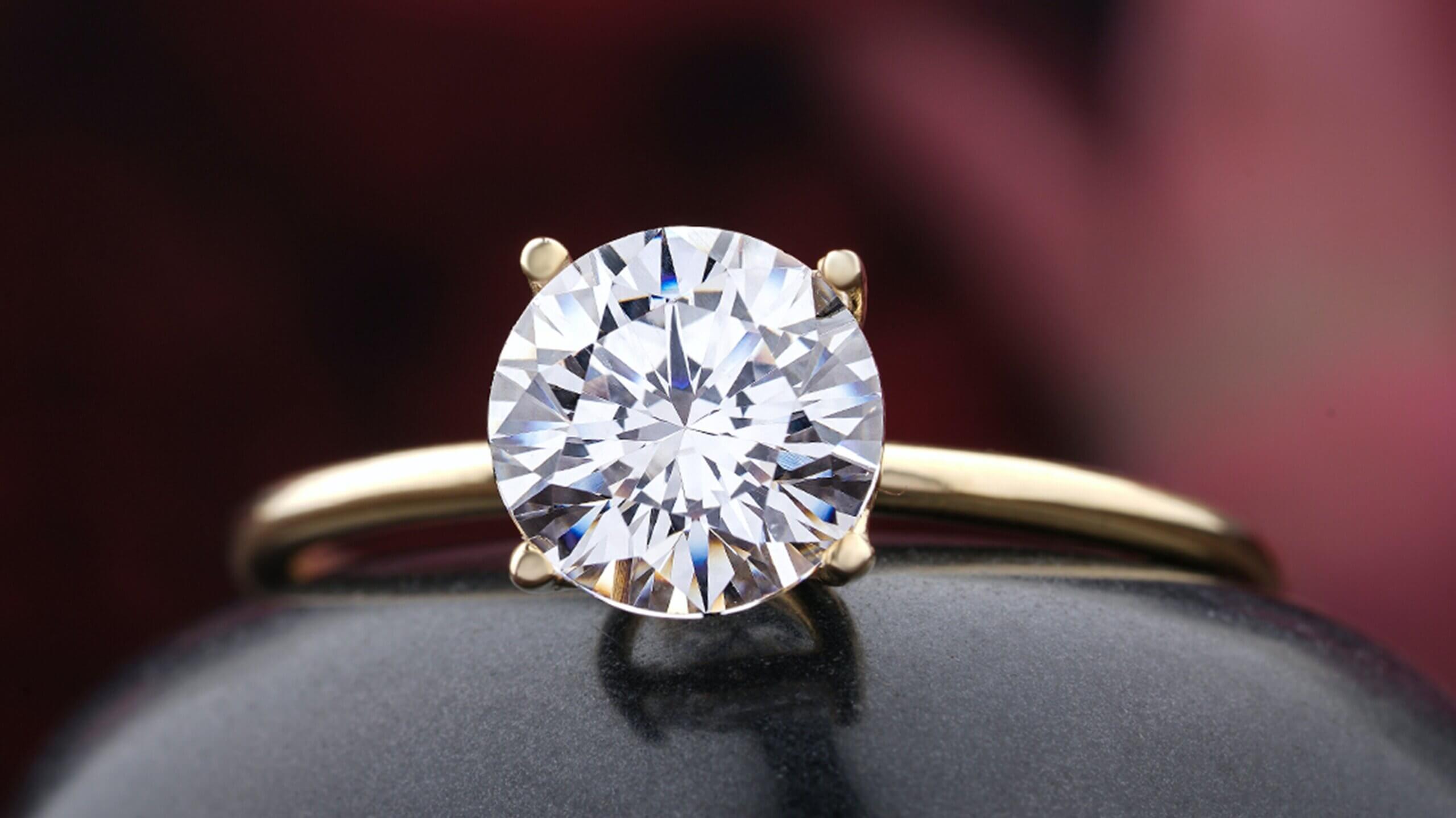
Metal Matters: Platinum vs Gold
If anyone is ever on the fence when it comes to platinum vs white gold, we’d tend to point them in the direction of platinum. Whereas white gold still features a slightly warmer hue, platinum features a stark, ice-white color that almost appears to emit its own light.
Don’t get us wrong, both metals look stunning. But the added benefits offered by platinum – its innate strength, for instance, and value for those with sensitive skin or allergies to certain metals – makes it a very strong contender in our book.
Our Expert Take
A two carat diamond brings a significant amount of extra weight and sparkle to the finger, and, at around twice the national average for engagement rings, will undoubtedly stand out from the crowd.
Investing in 2 carats is a great way to get more out of your beautiful diamond. The added weight makes it much easier for you to appreciate that impeccably cut shape – and, of course, the tremendous show of brilliance and fire that it is capable of offering. Even in the more subdued shapes, like the Emerald, a diamond of this weight will create a truly stunning effect, and enable you to take full advantage of that mesmerizing hall of mirrors effect.
Some people are surprised to discover the substantial difference in price between a 1 carat engagement ring and a 2 carat engagement ring but, given the high level of prestige attached to diamonds of this size – and, beyond that, the sheer beauty they offer – it’s not surprising to discover that price increases exponentially.
For us, the ability to make an even stronger impact with your chosen ring is a hard opportunity to pass up – and more than capable of doing all the talking for you by the time you’re down on one knee, watching her eyes light up. So dive into the world of 2 carat diamonds and emerge with a ring that’s not just a piece of jewelry, but a symbol of enduring love
7 FAQs
- Q: What is the average cost of a 2-carat diamond ring?
- A: The average cost of a 2-carat diamond ring varies widely from $8,500 to $55,000. Factors influencing the price include the diamond’s cut, color, clarity, and the specific characteristics of each stone.
- Q: Is a 2-carat diamond considered large for an engagement ring?
- A: Yes, a 2-carat diamond is considered large and impressive for an engagement ring, standing out significantly compared to the more common 1-carat size.
- Q: What should I prioritize when choosing a 2-carat diamond?
- A: Prioritize the cut of the diamond, as it greatly affects the stone’s brilliance and overall appearance. A high-quality cut can enhance the stone’s beauty and mask minor color and clarity imperfections.
- Q: Does the shape of a 2-carat diamond affect its price?
- A: Yes, the shape of a 2-carat diamond can impact its price. Round diamonds are usually the most expensive due to their popularity and brilliance, while other shapes like oval or cushion might offer more value.
- Q: How can I get the best deal on a 2-carat diamond ring?
- A: To get the best deal on a 2-carat diamond ring, consider slightly under 2-carat weights, explore different shapes, and balance the color and clarity grades for the best combination of beauty and value.
- Q: Can the ring setting make a 2-carat diamond look bigger?
- A: Yes, certain ring settings, like a halo design, can make a 2-carat diamond appear larger and more impressive.
- Q: How does lighting affect my view of a 2-carat diamond?
- A: Different lighting conditions can change the appearance of a diamond. It’s essential to view the diamond under various lighting, including natural light, to get a true sense of its color and clarity.
Discover the true value of 2 carat diamonds with Jeweler AI – where your perfect ring awaits.
Here are more specific diamond prices topics to browse:
- Melee Diamonds: The Perfect Accents to Enhance the Center Stone
- Small Diamond Engagement Rings: Big Sparkle Comes In Little Packages
- 0.25 Carat Diamond: Tiny Treasure or Just Too Small?
- The True Value of a 0.5 Carat Diamond Ring Revealed
- 0.7, 0.8, 0.9 Carat Diamond Showdown: Which One Wins?
- Price Alert: Don’t Overpay for a 1 Carat Diamond Ring!
- What You Should Pay for a 1.5 Carat Diamond Ring?
- How Much Does a 2.5 Carat Diamond Really Cost?
- The Real Cost of a 3 Carat Diamond Ring
- Industry Secret: How Much Does a 4-Carat Diamond Ring Actually Cost?
- How Much is Too Much? The True Cost of 5 Carat Diamond Ring!
- 6 Carat Diamond Rings: Pricing Breakdown & Value Tips
- 7 Carat Diamond Rings: Affordable Luxury Prices Revealed
- 8 Carat Diamond Rings: Price Comparison & Savings Tips
- 9 Carat Diamond Rings: Detailed Pricing Guide & Best Deals
- 10-13 Carat Diamonds: The Ultimate Symbol of Luxury!
- 15 Carat Diamonds: Why Celebrities Love Them!
- Unveiling the Majesty: The Secrets Behind the 20 Carat Diamond Ring!
- Decoding the Grandeur: The Journey to Choosing a 25 Carat Diamond Ring
- Average Carat Size for Rings: What’s the Ideal?
- Understanding What Is CTTW Diamond In Engagement Ring
- The Truth About Why Diamonds Are So Expensive and Incredibly Valuable
FOLLOW-UP GUIDE SERIES

